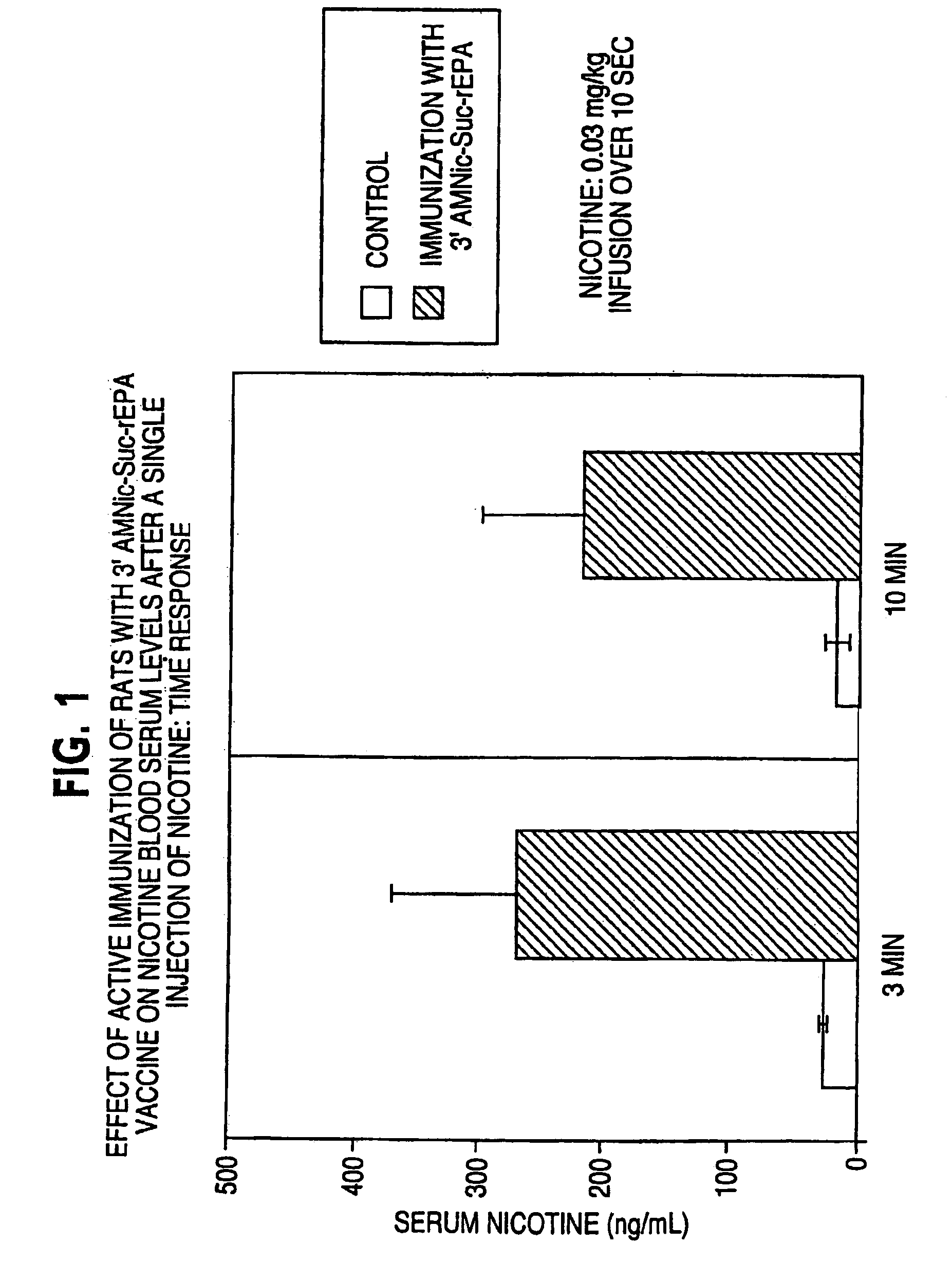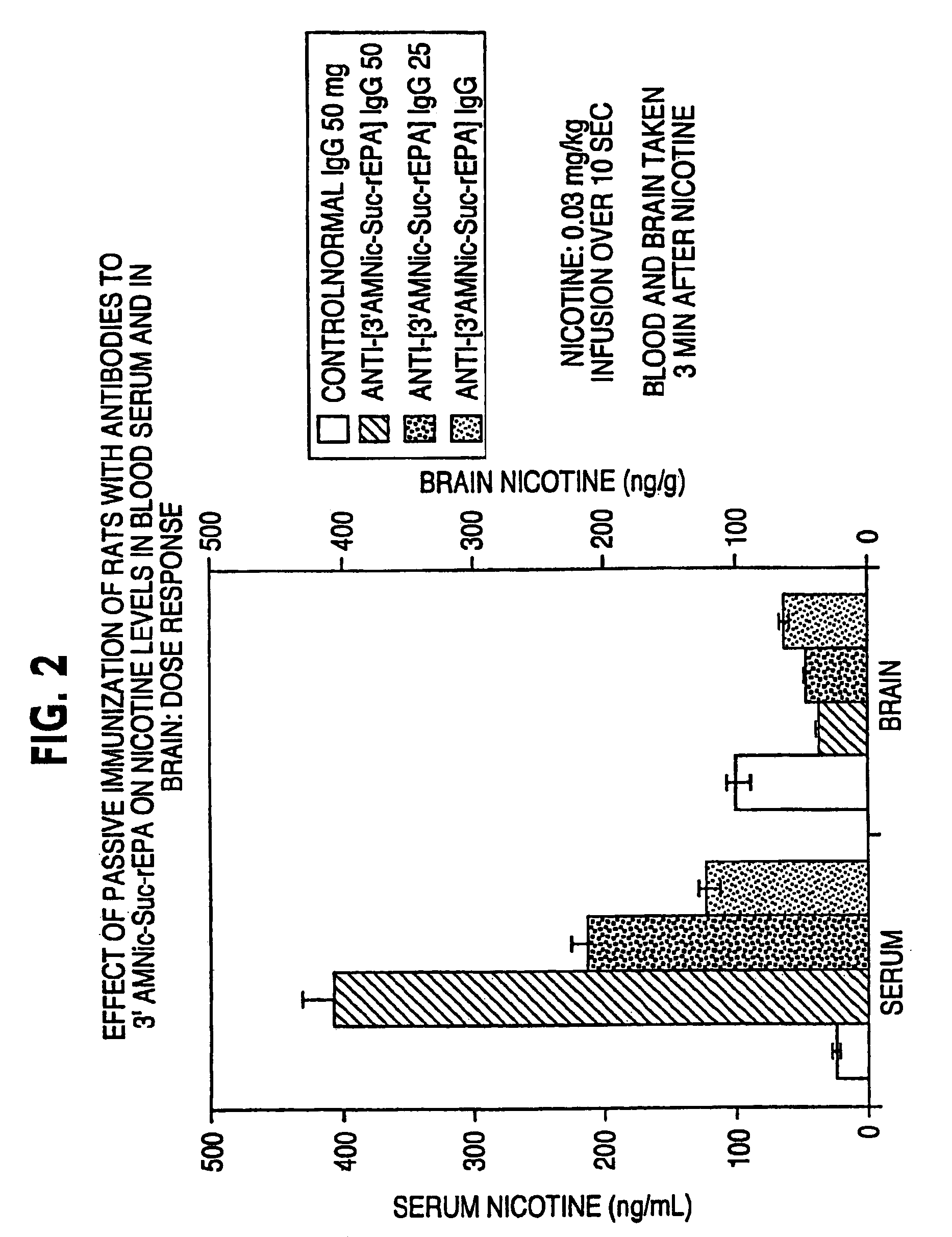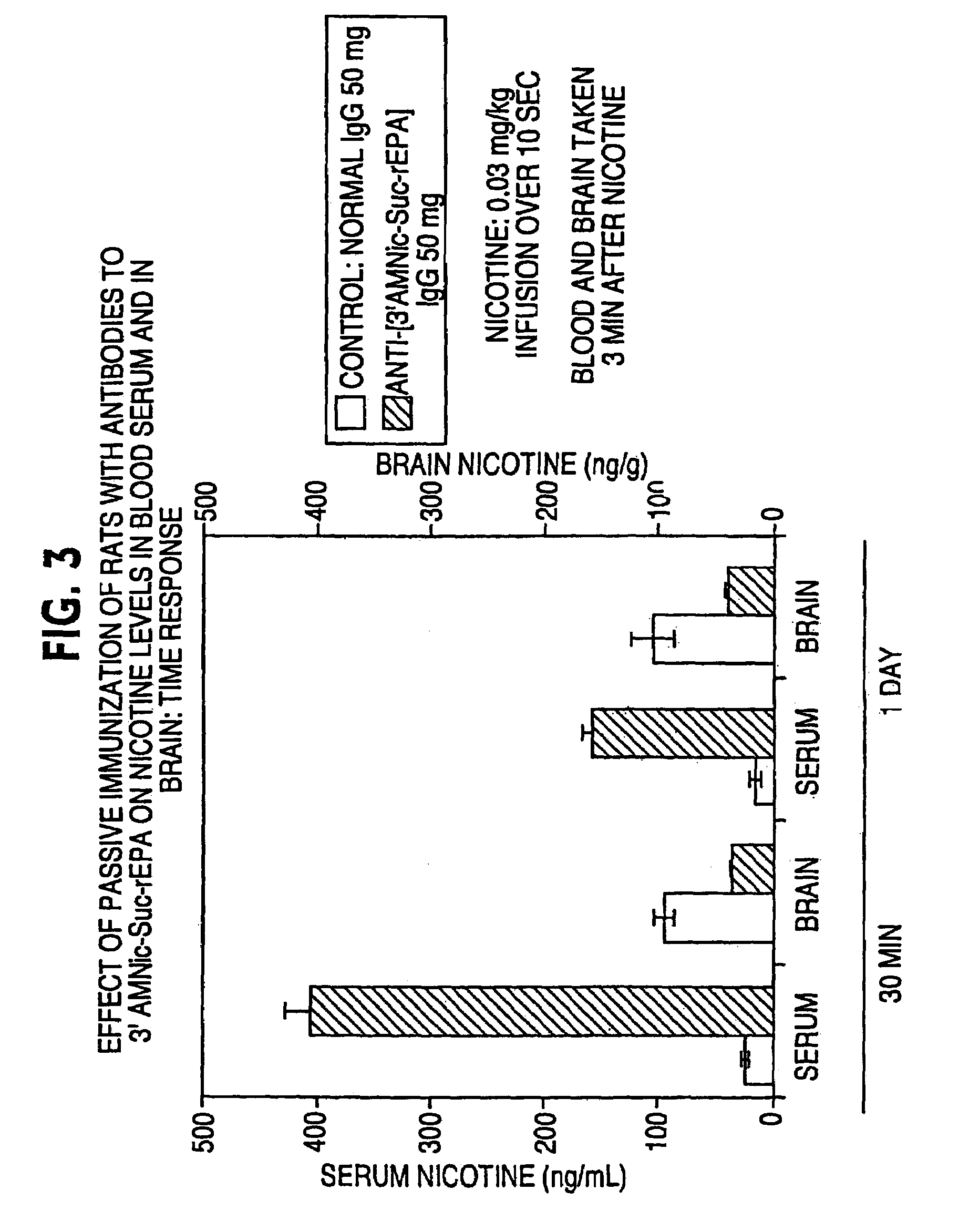Hapten-carrier conjugates for treating and preventing nicotine addiction
a carrier conjugate and nicotine technology, applied in the field of nicotine addiction treatment and prevention, can solve the problems of high arterial concentration, high blood nicotine, and high smoking rate, and achieve the effects of stimulating antibody production, reducing brain nicotine levels, and raising serum nicotine levels
- Summary
- Abstract
- Description
- Claims
- Application Information
AI Technical Summary
Benefits of technology
Problems solved by technology
Method used
Image
Examples
example 1
Synthesis of a Derivitized Nicotine Hapten (Substituted at the 3′ Position)
[0090]The starting material for the synthesis of the hapten is trans-4′-carboxy-(−)-cotinine, available from commercial sources. A modification of the procedure described by Cushman and Castagnoli, Jr. (1972) J. Org. Chem. 37(8):1268–1271 provides the alcohol, trans-3′-hydroxymethyl-(−)-nicotine, after methyl esterification of the acid followed by reduction of the ester. The alcohol is then sulfonated and the sulfonate is displaced with an azido group, which is finally reduced to an amine.
[0091]4 g of trans-4′-carboxy-(−)-cotinine are dissolved in 50 mL of a solution of 2 N sulfuric acid in dry methanol and stirred overnight at room temperature. The resulting suspension is filtered through a Whatman No. 1 filter paper and added slowly to 100 mL of a saturated solution of sodium bicarbonate. The ester is extracted with dichloromethane to afford 4.2 g of a pink oil after solvent evaporation.
[0092]A solution of ...
example 2
Synthesis of a Derivitized Nicotine Hapten (Substituted at the 4′ Position)
[0096]Introduction of a functionalized arm on position 4′ of nicotine can be achieved by enolate alkylation of cotinine followed by reduction of the alkylated product. Various alkylating agents can be used like an appropriately protected 3-bromo-propylamine. As examples, 3-bromo-N-carbobenzyloxy-propylamine or N-(3-bromopropyl)-phtalamide can be used. The amine protecting group will have to be removed after alkylation and reduction and prior to conjugation to a carrier protein. Enolate alkylation of cyclic lactams (containing the pyrrolidinone ring) is well documented in the literature (see G. Helmchen et al. (1995) Steroselective Synthesis in Houben-Weyl-Methods of Organic Chemistry, Vol. E21a, 762–881, Thieme, Stuttgart, Germany, for a general review, and A. J. Meyers et al. (1997) J. Am. Chem. Soc., 119, 4564–4566, for steric considerations of the reaction). There are also some examples of enolate alkylati...
example 3
Synthesis of a Derivitized Nicotine Hapten (Substituted at the 5′ Position)
[0099]Introduction of a functionalized arm on position 5′ of nicotine can be achieved by reacting appropriately protected alkyl lithium compounds with cotinine, followed by reduction with sodium cyanoborohydride, in procedures similar to those described by Shibagaki et al. (1986) Heterocycles, 24, 423–428 and N.-H. Lin et al. (1994) supra.
PUM
| Property | Measurement | Unit |
|---|---|---|
| molecular weight | aaaaa | aaaaa |
| pH | aaaaa | aaaaa |
| polydispersity | aaaaa | aaaaa |
Abstract
Description
Claims
Application Information
 Login to View More
Login to View More - R&D
- Intellectual Property
- Life Sciences
- Materials
- Tech Scout
- Unparalleled Data Quality
- Higher Quality Content
- 60% Fewer Hallucinations
Browse by: Latest US Patents, China's latest patents, Technical Efficacy Thesaurus, Application Domain, Technology Topic, Popular Technical Reports.
© 2025 PatSnap. All rights reserved.Legal|Privacy policy|Modern Slavery Act Transparency Statement|Sitemap|About US| Contact US: help@patsnap.com



